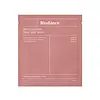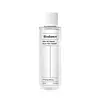What's inside
What's inside
 Key Ingredients
Key Ingredients

 Benefits
Benefits

 Concerns
Concerns

 Ingredients Side-by-side
Ingredients Side-by-side

Water
Skin ConditioningGlycerin
HumectantAcrylates Copolymer
Niacinamide
SmoothingCeratonia Siliqua Gum
EmollientChondrus Crispus Extract
Skin ConditioningDipropylene Glycol
HumectantBetaine
HumectantAlgin
Masking1,2-Hexanediol
Skin ConditioningHydroxyacetophenone
AntioxidantButylene Glycol
HumectantPotassium Chloride
Agar
MaskingCaprylyl Glycol
EmollientSucrose
HumectantAllantoin
Skin ConditioningPolyglyceryl-10 Laurate
Skin ConditioningEthylhexylglycerin
Skin ConditioningGalactomyces Ferment Filtrate
HumectantAdenosine
Skin ConditioningDisodium EDTA
Pyrus Communis Fruit Extract
Skin ConditioningRosa Damascena Flower Water
MaskingCollagen Extract
Skin ConditioningIris Florentina Root Extract
MaskingCucumis Melo Fruit Extract
Skin ConditioningHedera Helix Leaf/Stem Extract
AntimicrobialDipotassium Glycyrrhizate
HumectantHydrolyzed Hyaluronic Acid
HumectantLactobacillus Ferment
Skin ConditioningBifida Ferment Filtrate
Skin ConditioningLactobacillus Ferment Lysate
Skin ConditioningTocopherol
AntioxidantWater, Glycerin, Acrylates Copolymer, Niacinamide, Ceratonia Siliqua Gum, Chondrus Crispus Extract, Dipropylene Glycol, Betaine, Algin, 1,2-Hexanediol, Hydroxyacetophenone, Butylene Glycol, Potassium Chloride, Agar, Caprylyl Glycol, Sucrose, Allantoin, Polyglyceryl-10 Laurate, Ethylhexylglycerin, Galactomyces Ferment Filtrate, Adenosine, Disodium EDTA, Pyrus Communis Fruit Extract, Rosa Damascena Flower Water, Collagen Extract, Iris Florentina Root Extract, Cucumis Melo Fruit Extract, Hedera Helix Leaf/Stem Extract, Dipotassium Glycyrrhizate, Hydrolyzed Hyaluronic Acid, Lactobacillus Ferment, Bifida Ferment Filtrate, Lactobacillus Ferment Lysate, Tocopherol
Water
Skin ConditioningGluconolactone 8%
Skin Conditioning2,3-Butanediol
HumectantButylene Glycol
HumectantTromethamine
BufferingGlycerin
HumectantStreptococcus Thermophilus Ferment
HumectantChlorella Vulgaris Extract
Skin ConditioningSodium Hyaluronate
HumectantHydrolyzed Hyaluronic Acid
HumectantPyrus Malus Juice
Skin ConditioningOzothamnus Diosmifolius Extract
Althaea Rosea Flower Extract
Skin ConditioningHydrolyzed Vegetable Protein
Skin ConditioningLactobacillus Ferment
Skin ConditioningPanthenol
Skin ConditioningGlucose
HumectantFructooligosaccharides
HumectantFructose
HumectantSodium PCA
HumectantSodium Phytate
1,2-Hexanediol
Skin ConditioningEthylhexylglycerin
Skin ConditioningCapryloyl Salicylic Acid
ExfoliatingDipalmitoyl Hydroxyproline
Skin ConditioningMaltodextrin
AbsorbentHydrogenated Lecithin
EmulsifyingStearic Acid
CleansingLinolenic Acid
CleansingSucrose
HumectantCeramide NP
Skin ConditioningCholesterol
EmollientPhytosphingosine
Skin ConditioningCeramide Ng
Skin ConditioningCeramide Ns
Skin ConditioningCeramide AP
Skin ConditioningCeramide As
Skin ConditioningCeramide EOP
Skin ConditioningCetearyl Alcohol
EmollientDisodium EDTA
Water, Gluconolactone 8%, 2,3-Butanediol, Butylene Glycol, Tromethamine, Glycerin, Streptococcus Thermophilus Ferment, Chlorella Vulgaris Extract, Sodium Hyaluronate, Hydrolyzed Hyaluronic Acid, Pyrus Malus Juice, Ozothamnus Diosmifolius Extract, Althaea Rosea Flower Extract, Hydrolyzed Vegetable Protein, Lactobacillus Ferment, Panthenol, Glucose, Fructooligosaccharides, Fructose, Sodium PCA, Sodium Phytate, 1,2-Hexanediol, Ethylhexylglycerin, Capryloyl Salicylic Acid, Dipalmitoyl Hydroxyproline, Maltodextrin, Hydrogenated Lecithin, Stearic Acid, Linolenic Acid, Sucrose, Ceramide NP, Cholesterol, Phytosphingosine, Ceramide Ng, Ceramide Ns, Ceramide AP, Ceramide As, Ceramide EOP, Cetearyl Alcohol, Disodium EDTA
 Reviews
Reviews

Ingredients Explained
These ingredients are found in both products.
Ingredients higher up in an ingredient list are typically present in a larger amount.
1,2-Hexanediol is a synthetic liquid and another multi-functional powerhouse.
It is a:
- Humectant, drawing moisture into the skin
- Emollient, helping to soften skin
- Solvent, dispersing and stabilizing formulas
- Preservative booster, enhancing the antimicrobial activity of other preservatives
Butylene Glycol (or BG) is used within cosmetic products for a few different reasons:
Overall, Butylene Glycol is a safe and well-rounded ingredient that works well with other ingredients.
Though this ingredient works well with most skin types, some people with sensitive skin may experience a reaction such as allergic rashes, closed comedones, or itchiness.
Learn more about Butylene GlycolDisodium EDTA plays a role in making products more stable by aiding other preservatives.
It is a chelating agent, meaning it neutralizes metal ions that may be found in a product.
Disodium EDTA is a salt of edetic acid and is found to be safe in cosmetic ingredients.
Learn more about Disodium EDTAEthylhexylglycerin (we can't pronounce this either) is commonly used as a preservative and skin softener. It is derived from glyceryl.
You might see Ethylhexylglycerin often paired with other preservatives such as phenoxyethanol. Ethylhexylglycerin has been found to increase the effectiveness of these other preservatives.
Glycerin is already naturally found in your skin. It helps moisturize and protect your skin.
A study from 2016 found glycerin to be more effective as a humectant than AHAs and hyaluronic acid.
As a humectant, it helps the skin stay hydrated by pulling moisture to your skin. The low molecular weight of glycerin allows it to pull moisture into the deeper layers of your skin.
Hydrated skin improves your skin barrier; Your skin barrier helps protect against irritants and bacteria.
Glycerin has also been found to have antimicrobial and antiviral properties. Due to these properties, glycerin is often used in wound and burn treatments.
In cosmetics, glycerin is usually derived from plants such as soybean or palm. However, it can also be sourced from animals, such as tallow or animal fat.
This ingredient is organic, colorless, odorless, and non-toxic.
Glycerin is the name for this ingredient in American English. British English uses Glycerol/Glycerine.
Learn more about GlycerinHydrolyzed Hyaluronic Acid is a form of hyaluronic acid. It is created by the hydrolysis of hyaluronic acid with a high molecular weight. Once created, Hydrolyzed Hyaluronic Acid has a low molecular weight.
Low molecular weight HA has been shown to hydrate and increase elasticity of the skin. Increasing elasticity is also associated with reduction of wrinkle depth.
One study found topical low molecular weight hyaluronic acid may be considered for the treatment of rosacea in the adult population. However, we always recommend speaking with a professional about your skin concerns.
Hyaluronic acids are a humectant. This means they draw moisture from the air. Hyaluronic acids help moisturize, soothe, and protect the skin.
Read more about other common forms of hyaluronic acid:
Learn more about Hydrolyzed Hyaluronic AcidLactobacillus Ferment is created by fermenting the Lactobacillus bacteria. It helps keep our skin's natural barrier and microbiome healthy.
Studies show lactobacillus ferment to be effective at repairing the skin barrier. Having a healthy skin barrier helps keep your skin healthy and hydrated. It also protects against bad bacteria.
As a probiotic/prebiotic/postbiotic, Lactobacillus ferment can help regular our natural biome. In fact, one study found a lack of diversity in our natural skin biome can trigger acne.
Learn more about Lactobacillus FermentSucrose is a natural sugar found in fruits, vegetables, and nuts. It is the main constituent of white sugar.
In skincare, sucrose is a humectant and can be a mild exfoliant.
Sucrose is hydrophilic, meaning it attracts water. This makes it an effective humectant and helps hydrate the skin.
Studies show sugars may worsen acne-prone skin due to it disrupting the skin's natural biome. We recommend speaking with a professional if you have any concerns.
In some products such as body scrubs, sucrose is used as an gentle exfoliant.
The term 'sucrose' comes from the french word for sugar, 'sucre'.
Learn more about SucroseWater. It's the most common cosmetic ingredient of all. You'll usually see it at the top of ingredient lists, meaning that it makes up the largest part of the product.
So why is it so popular? Water most often acts as a solvent - this means that it helps dissolve other ingredients into the formulation.
You'll also recognize water as that liquid we all need to stay alive. If you see this, drink a glass of water. Stay hydrated!
Learn more about Water